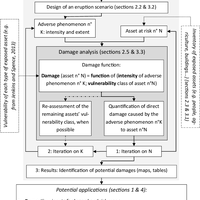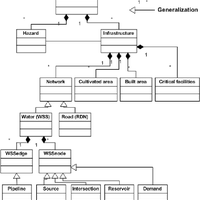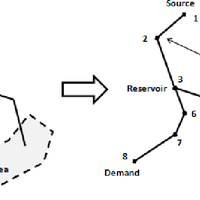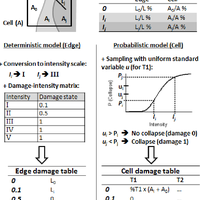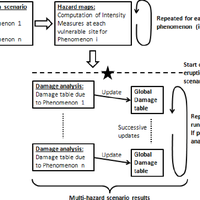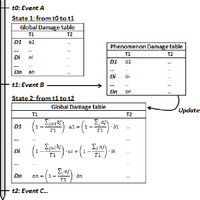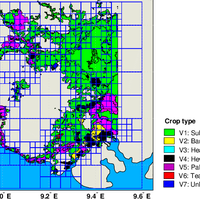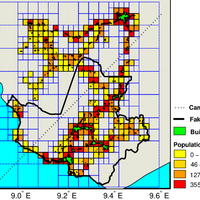Abstract
This paper presents an integrated approach to conduct a scenario-based volcanic risk assessment on a variety of exposed assets, such as residential buildings, cultivated areas, network infrastructures or individual strategic buildings. The focus is put on the simulation of scenarios, based on deterministic adverse event input, which are applied to the case study of an effusive eruption on the Mount Cameroon vlcano, resulting in the damage estimation of the assets located in the area. The work is based on the recent advances in the field of seismic risk. A software for systemic risk scenario analysis developed within the FP7 project SYNER-G has been adapted to address the issue of volcanic risk. Most significant improvements include the addition of vulnerability models adapted to each kind of exposed element and the possibility to quantify the successive potential damages inflicted by a sequence of adverse events (e.g. lava flows, tephra fall, etc.). The use of an object-oriented architecture gives the oportunity to model and compute the physical damage of very disparate types of infrastructures under the same framework. Finally, while the risk scenario approach is limited to the assessment of the physical impact of adverse events, a specific focus on strategic infrastructures and a dialogue with stakeholders helps in evaluating the potential wider indirect consequences of an eruption.© 2013 Author(s).
Figures
Register to see more suggestions
Mendeley helps you to discover research relevant for your work.
Cite
CITATION STYLE
Gehl, P., Quinet, C., Le Cozannet, G., Kouokam, E., & Thierry, P. (2013). Potential and limitations of risk scenario tools in volcanic areas through an example at Mount Cameroon. Natural Hazards and Earth System Sciences, 13(10), 2409–2424. https://doi.org/10.5194/nhess-13-2409-2013

